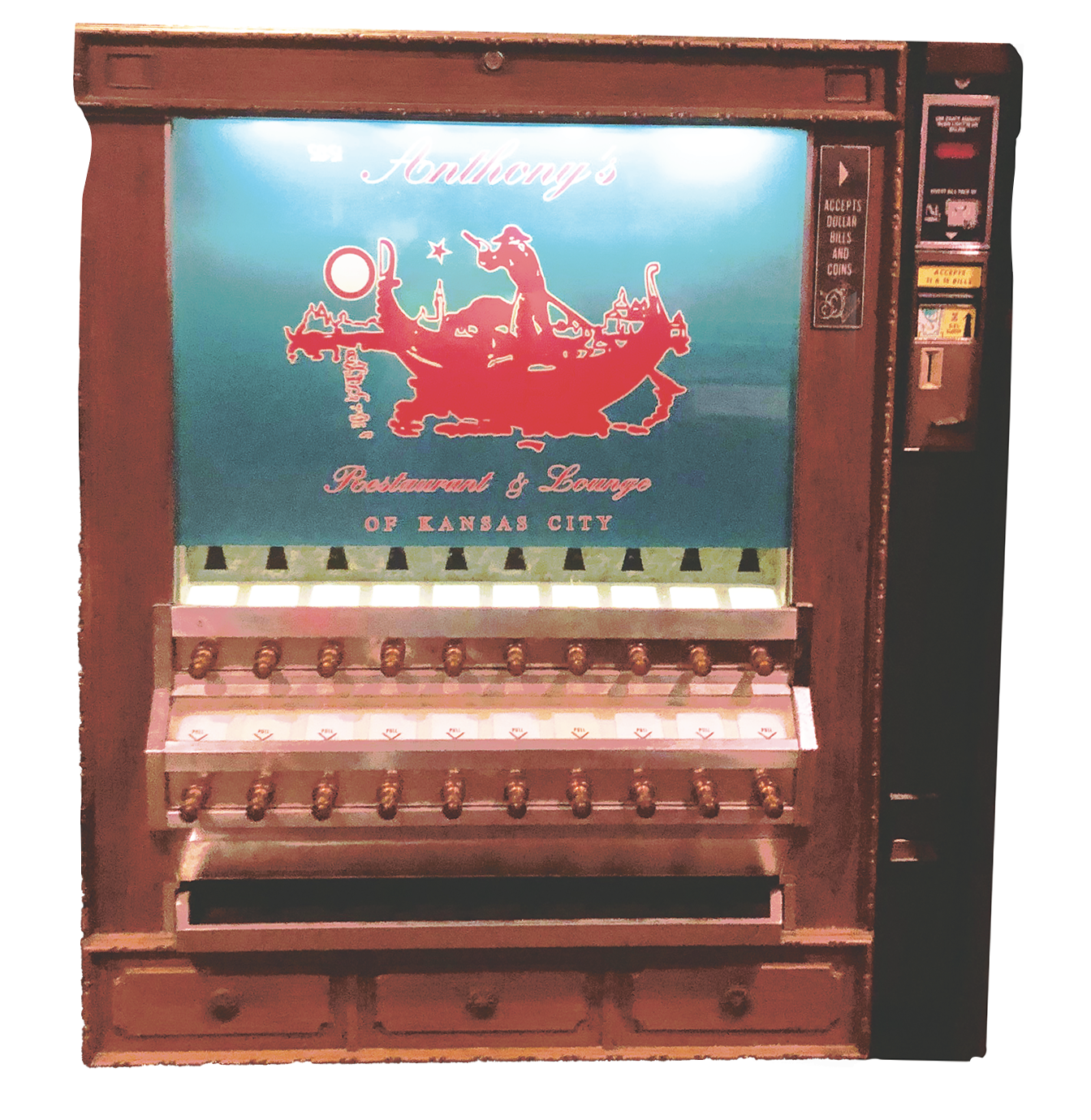
Dorri Partain
Managing Editor
Vending machines make the sale of anything possible: anywhere, anytime. Nearly any cafe, filling station, souvenir shop or tavern once offered cigarette packs for the convenience of inserting a few coins.
The first models appeared in 1928, as an attractive, tabletop dispenser — offering seven brands of packaged smokes. Two years earlier, William Rowe — a clerk with the Los Angeles Police Department — devised and patented the first model engineered from a confiscated moonshine still and a cigar box. To make a purchase, 15 cents was inserted into coin slots and a knob was pulled to release the desired pack into a tray below.
Rowe Manufacturing Co., was the major producer of cigarette vending machines, and later, offered wall-mounted models. Most models were designed to be eye-catching — with either a glass front to display the cigarette packs or a mirror, which was handy for ladies to apply lipstick or gentlemen to adjust their tie or hat. Some models had an additional knob and coin slot to purchase matches.
Following World War II, vending machines became larger to accommodate more brands and thus free-standing. While early models had merely appeared as ornate boxes, post-war styles were as rounded and sleek as the automobiles of that same period. By the 1960’s, styles had reverted to a less ornate and box-shaped machine.
Concerned with the accessibility of cigarettes to minors, the Federal Drug Administration ruled on June 22, 2010 regarding the placement of cigarette vending machines. Today, only businesses that exclude anyone younger than 18 may own or operate such.
Per those guidelines, this vintage cigarette machine on display inside Anthony’s Restaurant & Lounge (701 Grand), remains an eye-catching reminder that functions but is no longer filled. According to Vito — the original owner’s son — this machine originally featured the logo for the Marlboro brand before its custom logo featuring the gondolier was applied.
















